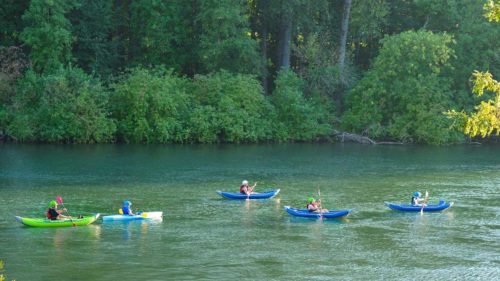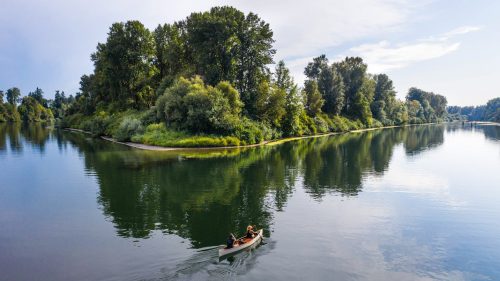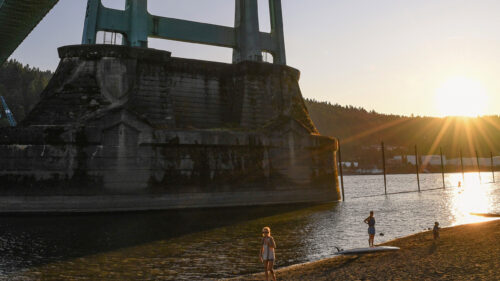Oregon is known for its impressive roster of scenic rivers and pristine lakes. So when temperatures climb, Oregonians love to grab their kayaks, fishing gear, inner tubes and paddleboards and head to the closest waterway to cool off. This summer, however, a combination of historic drought and wildfire-related closures has land managers expecting crowds even at the state’s more remote waterways. Here’s what you need to keep in mind when planning your next excursion to paddle, swim or post up for some lakeside lounging.
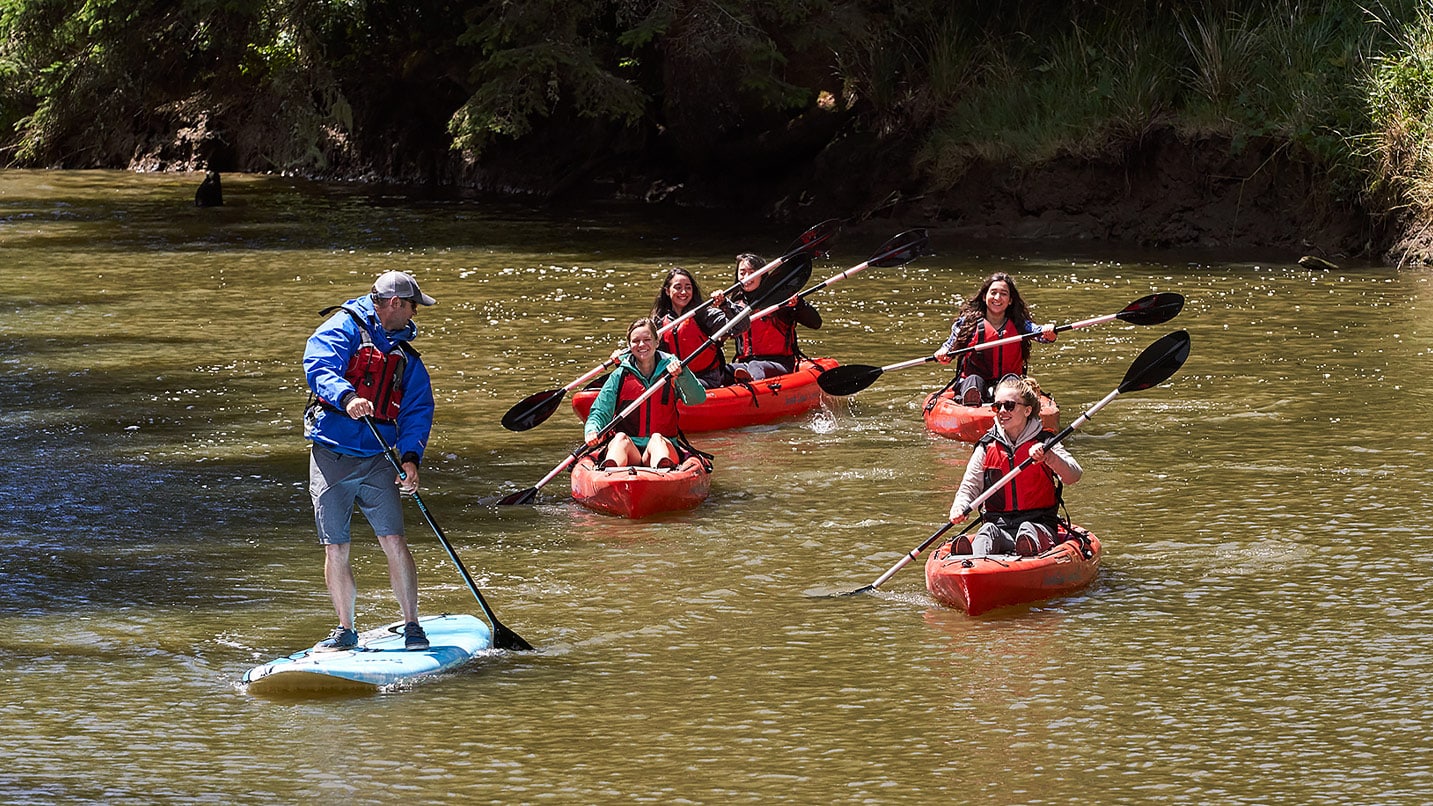
Know the Water
One of the most important steps to planning a float, paddle or swim is to make sure you understand the river or lake you’re visiting. Research whether the waterway has safe algae levels, and if you’re planning to float down a river, for example, check whether anyone has reported any obstructions such as downed trees along your route. That way you’ll know where to pay extra attention for hazards. Learn which launch sites are open, and learn the rules and regulations for statewide waterway use. Oregon is full of top paddling spots for families. When heading to the Oregon Coast, it’s important to know the tide tables — even if you’re planning on visiting estuaries. Outgoing tides can create a challenge for paddlers, so it’s important to know your limits and time your excursion accordingly. An example of this is Netarts Bay near Tillamook: The waterway seems calm but has an outgoing tide powerful enough to pull paddlers into the surf.
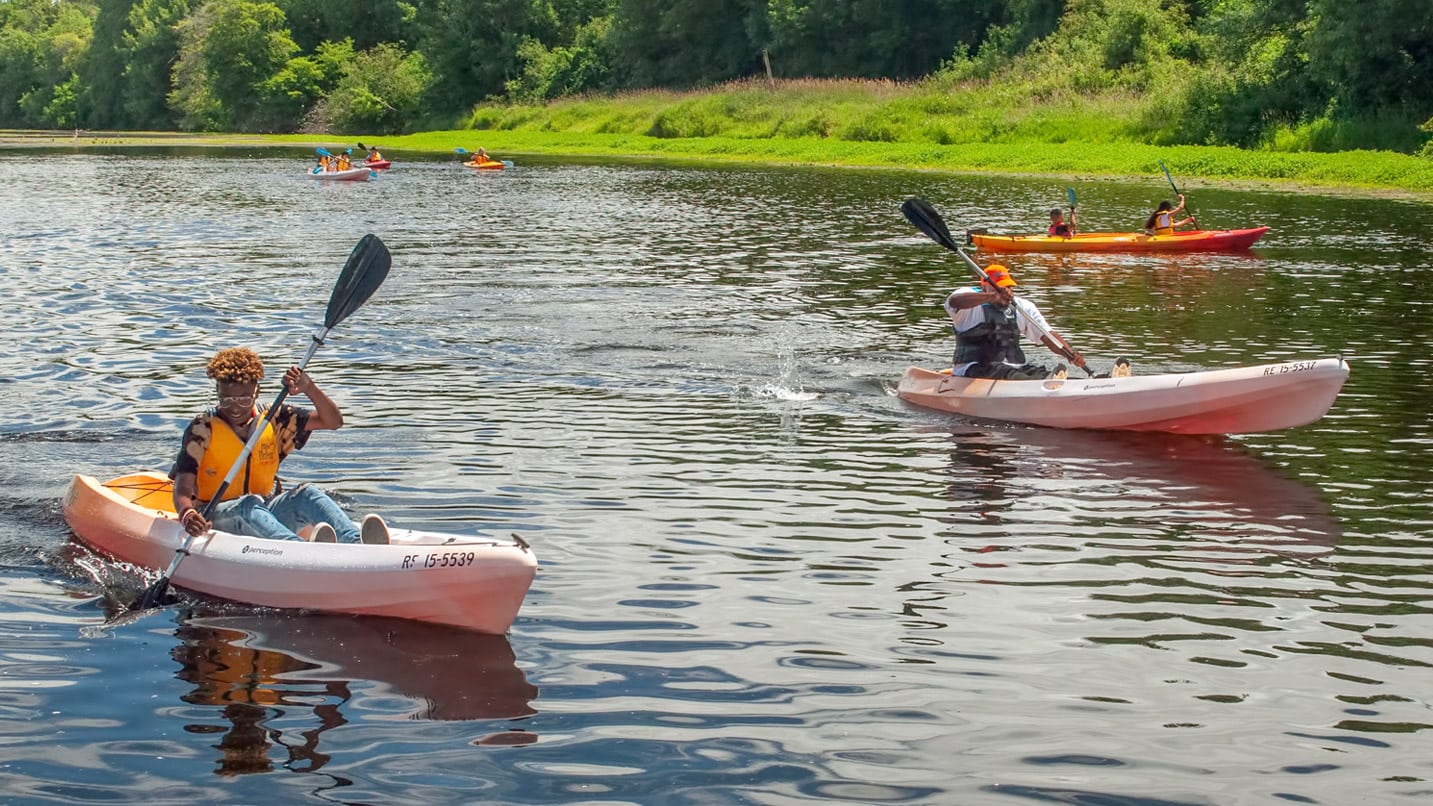
Consider Traveling a Little Farther
If you’re looking for a more secluded experience, consider traveling farther than originally planned for your launch point. You’ll also avoid more crowds by heading out midweek versus the weekend. Look for natural lakes, especially those in more remote areas, with less developed facilities and that may require hiking to get to. Sometimes a little more time in the car can make all the difference — and the Willamette River is a great example. In Portland the river gets crowded with kayakers, stand-up paddleboarders and boaters on weekends. You’ll have a better chance of getting the waterway to yourself if you head farther south to Milwaukie, West Linn, Oregon City, Salem, Corvallis and beyond to explore other stretches of the 187-mile Willamette River Water Trail.
Keep an Eye on Fire Conditions
While summer means more fun in the sun, it also means drier conditions that can cause wildfires to spark near the lake or river you’re planning to enjoy. Stay informed by paying attention to the fire conditions prior to your excursion, and look up which recreation sites are affected by seasonal events. Be sure to check out what you need to know about wildfires in Oregon.
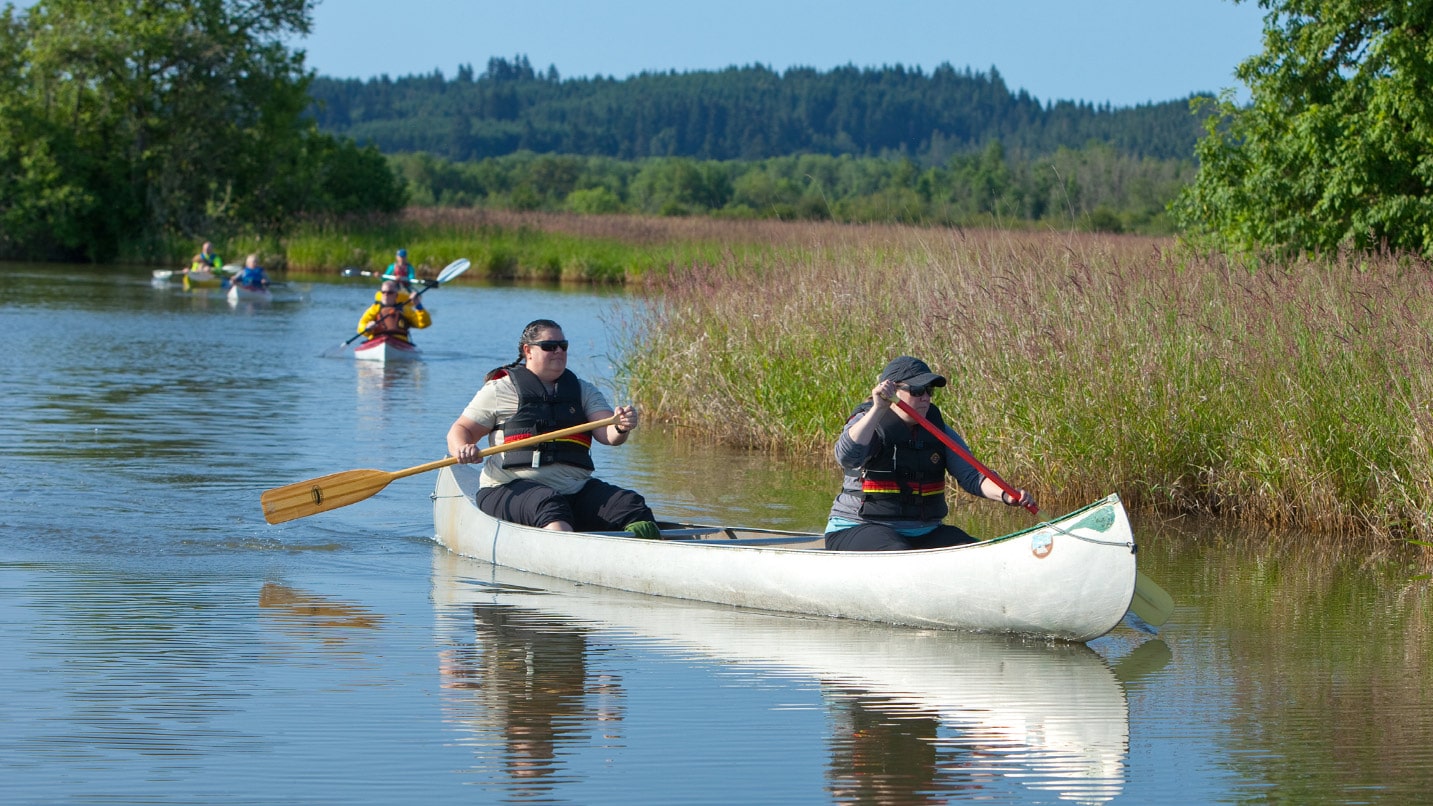
Be Respectful and Courteous
Just as with any time spent in nature, you should be respectful and courteous — of the plants and animals you encounter as well as other people enjoying the space. Make sure you’re taking care of these special rivers and lakes by packing out what you brought with you. When encountering wildlife, keep your distance and don’t do anything to disturb them. You’ll have plenty of opportunities for paddling and wildlife viewing at estuaries along the Oregon Coast, such as the Salmon River near Lincoln City, North Fork Siuslaw near Florence, Eel Lake near Reedsport and New River near Langlois. These are all small, protected waterways that, while still tidally influenced, are less affected than larger rivers.

Be Prepared for a Safe, Fun Day
Before heading out the door, make sure you’ve got the proper gear with you. Wear a life jacket — they save lives when things go wrong — and take food and water so you can maintain your energy and stay hydrated. Plan for sun exposure with sunscreen and protective clothing, but also make sure you’re dressed to get wet. Jeans, cotton clothing and heavy boots weigh you down in the water, making it more difficult to swim. If you’re using a SUP, make sure it has a quick-release leash that can easily separate if needed. If you’re planning to go out on a boat that is longer than 10 feet, you’ll need a Waterway Access Permit. If you’d like to make sure you’re being extra safe on the water, consider taking this free online paddle safety course.
